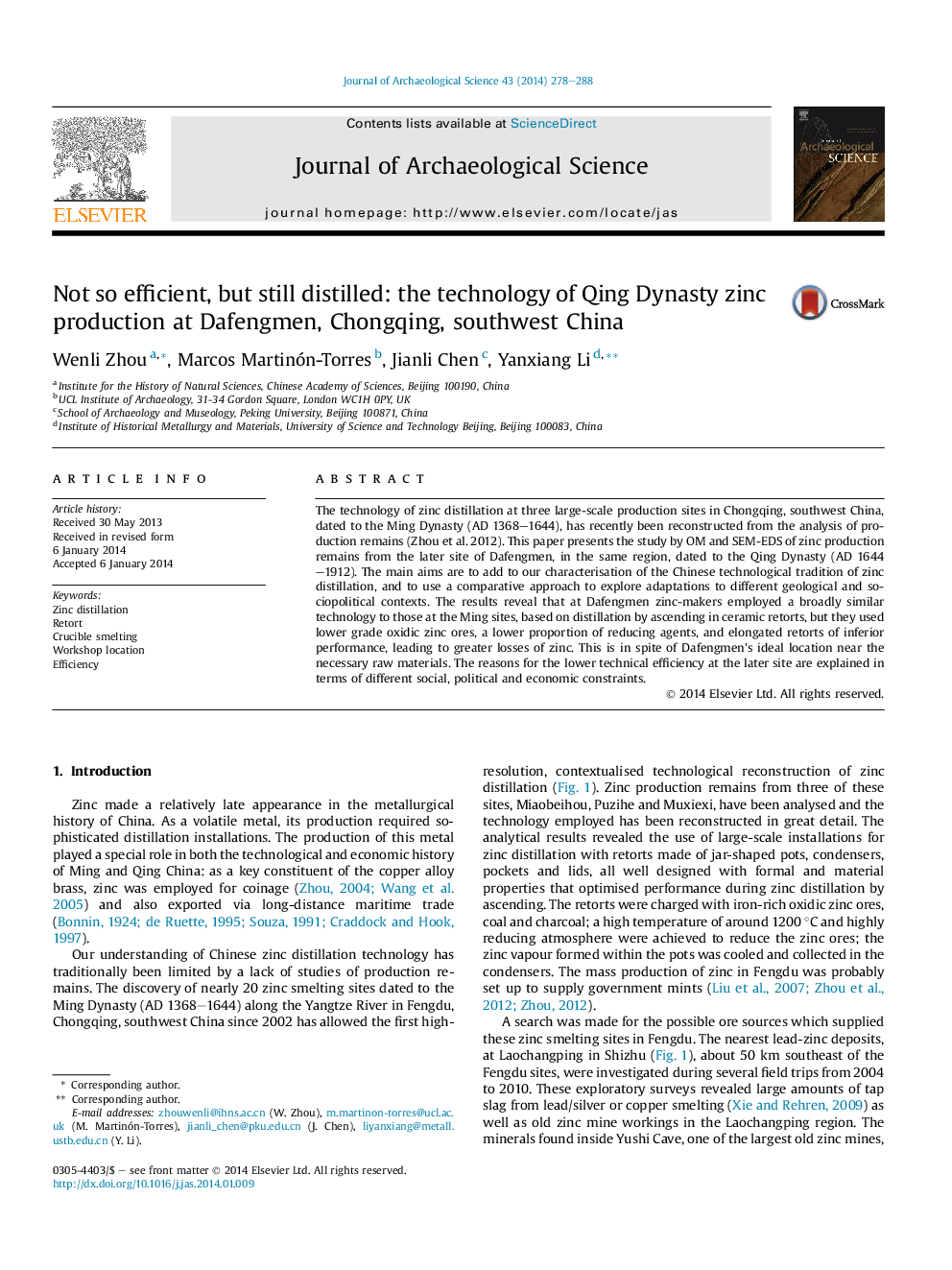| Article ID | Journal | Published Year | Pages | File Type |
|---|---|---|---|---|
| 7443727 | Journal of Archaeological Science | 2014 | 11 Pages |
Abstract
The technology of zinc distillation at three large-scale production sites in Chongqing, southwest China, dated to the Ming Dynasty (AD 1368-1644), has recently been reconstructed from the analysis of production remains (Zhou et al. 2012). This paper presents the study by OM and SEM-EDS of zinc production remains from the later site of Dafengmen, in the same region, dated to the Qing Dynasty (AD 1644-1912). The main aims are to add to our characterisation of the Chinese technological tradition of zinc distillation, and to use a comparative approach to explore adaptations to different geological and sociopolitical contexts. The results reveal that at Dafengmen zinc-makers employed a broadly similar technology to those at the Ming sites, based on distillation by ascending in ceramic retorts, but they used lower grade oxidic zinc ores, a lower proportion of reducing agents, and elongated retorts of inferior performance, leading to greater losses of zinc. This is in spite of Dafengmen's ideal location near the necessary raw materials. The reasons for the lower technical efficiency at the later site are explained in terms of different social, political and economic constraints.
Keywords
Related Topics
Physical Sciences and Engineering
Materials Science
Materials Science (General)
Authors
Wenli Zhou, Marcos Martinón-Torres, Jianli Chen, Yanxiang Li,
